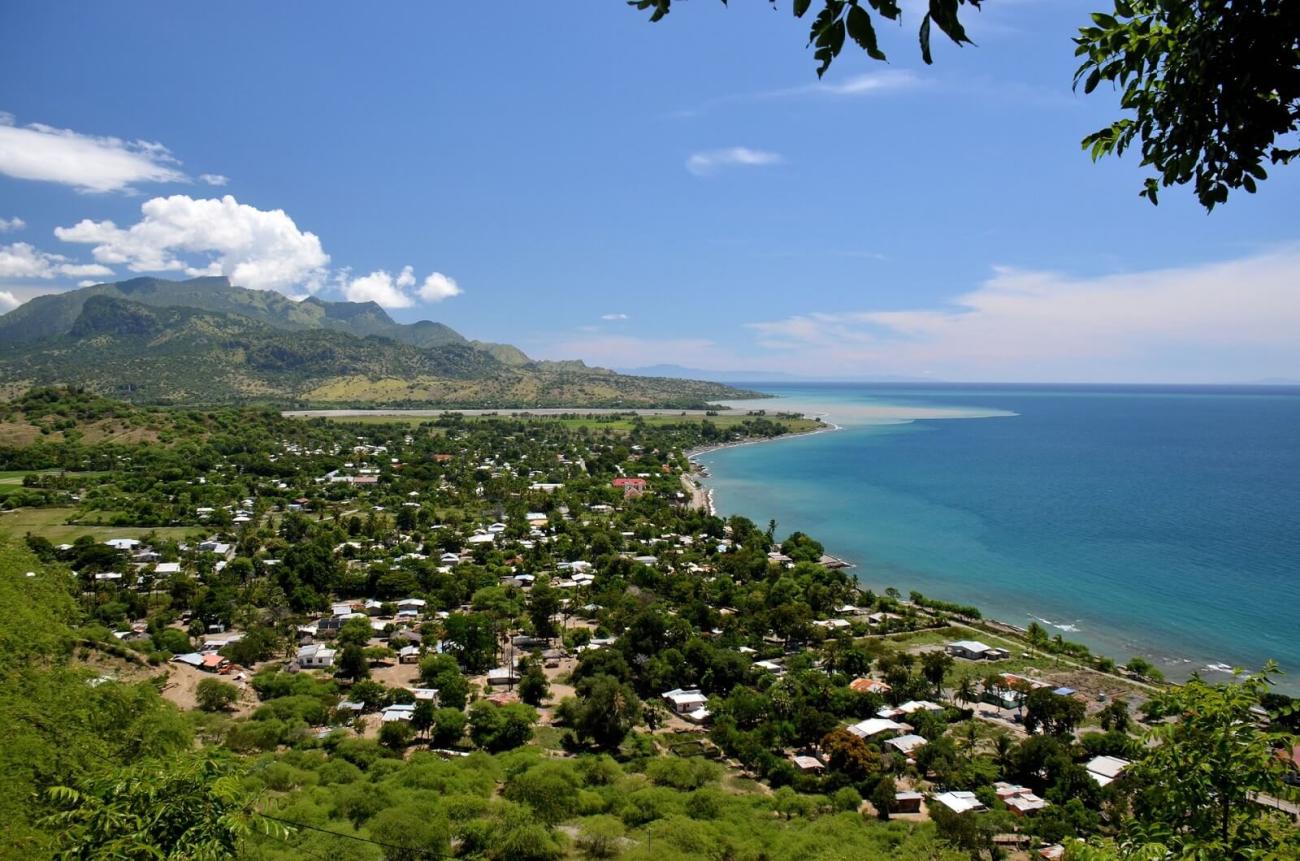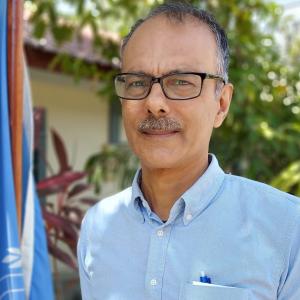New Blue Economy Opportunities For Timor-Leste

Op-Ed by UN Timor-Leste Resident Coordinator Roy Trivedy
The recent UN Climate Change Conference in Glasgow (COP26) highlighted the urgency of the global transition away from fossil fuels towards greener models of economic growth that bring both people and the planet back into balance. All nations need to urgently develop plans on how best to reduce their dependence on fossil fuels, while also creating new economic opportunities for their citizens.
Timor-Leste is at a critical development juncture. The country has been heavily dependent on oil and gas since it regained its independence in 2002, contributing around 90% of the country’s revenues in recent years. However, revenue from oil will start to decline over the next decade. At the same time, poverty levels remain high at almost 40% of the population. This has been made worse by the COVID-19 pandemic. Timor-Leste must therefore prioritise diversification of the economy and sources of income if its ambitions to become an upper-middle-income country are to be achieved by 2030. Political leaders will need to make important choices as to how to address the economic challenges and opportunities the country faces over the next period.
In 2019, the Timorese government prepared its first Voluntary National Review (VNR) of the UN’s Sustainable Development Goals (SDGs). One of the conclusions was that while Timor-Leste has a clear vision for achieving the SDGs as articulated in its Strategic Development Plan, what was missing was a plan for diversifying the economy and creating sustainable jobs for citizens, especially for youth that constitutes 74% of the population.
In line with this finding, the country has developed its first Blue Economy Financing Roadmap with financial and technical support from the UN Joint SDG Fund and UNDP. The Roadmap is a strategic document that explores opportunities to leverage finance at-scale for sustainable “blue growth” in Timor-Leste. Blue growth is about the sustainable use of ocean resources for economic growth and improved livelihoods, while preserving the health of ocean ecosystems. The Roadmap is part of a broader piece of work supported by the UN system, to assist Timor-Leste to develop an Integrated Financing Framework (INFF) and help it meet the SDGs. An INFF helps governments to unlock new sources of public and private finance for the SDGs, as well as use financial resources more strategically.
Timor-Leste is one of several Small Island Developing States (SIDS), that is increasingly recognising the promising sustainable development opportunities represented by the blue economy. Some are also piloting new and innovative approaches to financing key blue economy interventions. These include the Seychelles with its issuance of blue bonds and a debt-for-nature swap focused on sustainable fisheries in 2018. Fiji also launched a green bond in 2017, to be followed by a blue bond in 2022.
The Roadmap highlights the potential to invest in a range of sectors, including tourism, which is currently very small, and fisheries, as well as various types of sustainable aquaculture including tilapia, mud crabs, seaweed, and oyster farming. Many of these sectors are still in the early stages or exist only at subsistence level. These recommendations are aligned with a 2020 paper published by the International Growth Centre on the ‘Drivers of Growth and Sectoral Transformation’. This looked at policy priorities to help Timor-Leste realise the path to middle-income status, focusing on fisheries, agriculture, and tourism as key sectors for economic transformation and analysing the role of infrastructure investment, financing frameworks, and digital innovation.
Marine renewable energy, green port development and sustainable marine transportation are also major blue economy investment opportunities in Timor-Leste – with the potential to be truly transformational. A new port is under development near Dili, financed through Timor-Leste’s first public-private-partnership (PPP), and there is a stronger recognition by the authorities that sustained and targeted public and private investment is needed, especially in Timor-Leste’s secondary ports.
It is clear that a step-change in both public and private investments will be required to fully realise the blue economic opportunities in the country. The Roadmap suggests ways in which key sources of domestic and international finance can be leveraged more strategically to accelerate blue growth in Timor-Leste.
For example, the Roadmap also looks at how Timor-Leste’s Petroleum Fund could be used to capitalise a new Blue Economy Financing Facility to provide technical support, concessional capital and guarantees to attract local and international financiers, including investments from Timorese nationals and the Timorese diaspora. The Roadmap also explores the potential to leverage new and innovative debt financing instruments like blue bonds. Other innovative sources of finance, such as blue carbon markets, which are set to rise exponentially over the next decade, also represent a potential opportunity for Timor-Leste.
Official Development Assistance (ODA) has been a valuable resource to Timor-Leste since the restoration of independence, and development partners have funded a range of programmes linked to the blue economy. But it is also clear that the level of ODA in Timor-Leste has been declining over the past decade, which calls for exploring different ways of using aid monies, including blended finance, to create new opportunities for sustainable jobs and growth.
Looking forward, the Roadmap recommends that development partners support Timor-Leste to develop a costed blue economy investment plan as a tool to identify those inter-linked and transformative investments that will underpin sustainable blue growth over the next decade – and beyond. The Roadmap also highlights opportunities for Timor-Leste’s sizeable diaspora to be involved and contribute knowledge, skills, and resources.
Timor-Leste is at the beginning of a new sustainable development chapter – one which must be carefully managed to ensure a just and equitable transition that includes and benefits all Timorese, especially marginalised populations.
Through this work, the UN aims to inform a national dialogue on future development pathways for the country and explore a range of different financing flows that can underpin economic transformation. The government has decided to proactively explore blue growth pathways and is keen to collaborate with other small island states and neighbouring countries. The UN is proud to be supporting Timor-Leste in this journey, which can accelerate progress towards the SDGs.
Article written by:
Tuya Altangerel, Resident Representative, UNDP
Gail Hurley, Consultant on the Blue Economy Financing Roadmap
Roy Trivedy, UN Timor-Leste Resident Coordinator
Written by











